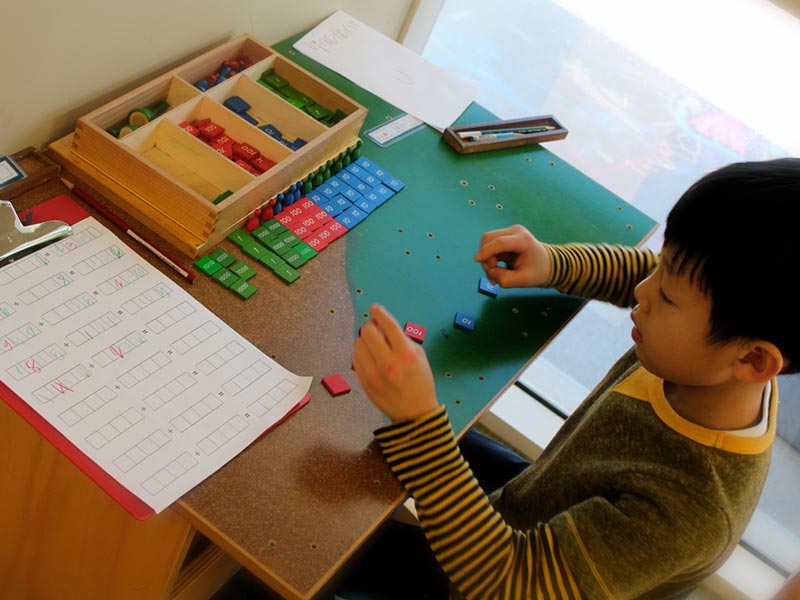In teaching, the problem of gaining the students' attention leads to more headaches, tears, cynicism, alcoholism, and changes of profession than any other part of the job. For many, gaining the attention of the class is by far the most difficult part of teaching. The situation is often dire for beginning teachers, who have been ill equipped to deal with the issue.
But there is hope.

There are many tricks of the trade for gaining kids' attention that are simple to learn and easy to implement. That said, because each trick is often best suited to a specific situation or a certain
teacher
personality, some experimentation with the techniques is advisable to obtain maximum effectiveness.
Below are 10 techniques for gaining kid's attention that I have used to good effect, along with the situations when I have found them most useful.
1) Killing the Competition
Killing the Competition is a technique to use before
class
starts. The goal is to eliminate anything around the classroom that will compete for the kids' attention. Do your kids like to stare out the windows? Find a creative way to block their view. Does the menagerie of mice and fish and snakes that you keep in the room distract them? Cover up the cages and aquariums during your lesson.
The less competition you have for the kids' attention, the more likely you will be to gain and hold their attention.
2) Avoid Dead Air
Avoid Dead Air is another technique the majority of which takes place before class.
A cardinal rule of
teaching
is that it is easier to keep a student's attention than it to get it. Therefore, when planning your lesson and preparing your materials, make sure that you are ready to flow smoothly from one part of your lesson to the next. Any pauses that occur are opportunities for something else to gain the kids' attention.
Seldom will anyone, especially kids, be content with sitting and doing nothing. If you don't provide anything to interest them, they will turn to something else. If you are in the middle of class and lose your notes, while you are looking for them, you
students
are looking for something else to do.
3) Conditioned Response
Conditioned Response takes some preparation, but it is wonderful for quickly getting the kids' attention when all hell has broken loose. The technique is straight from Pavlov.
Simply train the students to respond to a certain signal by giving the signal and telling the students how to respond. Next, practice the signal and response a few times. Tell your students to make
as much noise as they can; you can even lead them in making noise. Then, give the signal and wait for them to respond as you had directed. Try it a few more times, and the
students
will really start to catch on.
When it comes to signals, many
teachers
like to opt for the old-but-effective hand raise. "When I raise my hand, you must sit down, be quiet, and look at me." This old standby continues to be effective, and has been enhanced over the years by having the students also raise their hands, reinforcing the signal.
Recently, though, I have seen some updated, less boring, variations developed. In one variation the
teacher
says, "And a hush fell over the crowd," and the students respond with "Hush, hush, hush, hush, hush," emphasizing the "shh" sound. Having a fun or funny response increases the chances of the students willingly responding.
In responding to your signal, they have given you their attention. This technique usually improves with use, as over time the students will be conditioned to respond to the signal without even thinking about what they are doing.
4) The Black Bag
The Black Bag is best used to get the kids' attention at the beginning of
class
or after a break.
For this technique, simply put something large and interesting (and connected to your lesson) in a bag. Then, casually place the bag in a prominent location in the
classroom
. In a very short time, the kids' curiosity will get the best of them and you will hear them start to whisper and point to the bag. A few bolder students might even ask directly, "What's in the bag?"
At this point, the bag has their attention.
From here, it is easy to transfer their attention from the bag to you. Simply open up the bag, show them what is in it, and explain how it pertains to the lesson. Now they are listening to and watching you.
This technique can be used as often as once a day, as long as you always have something interesting in the bag. If the bag develops a reputation for being boring, then the kids will stop paying attention.
5) The Major Mistake
The Major Mistake has similarities to the Black Bag, and can be used at anytime during class when you want to tighten your grip on the kids' attention.
All you have to do is right something on the board that is obviously wrong. For example, you can misspell a word. Students love to point out mistakes their teachers make, and so anything you do wrong will almost instantly grab their attention.
As with the Black Bag, all you have to do then is to transfer their attention
from the mistake to you. You can do this by feigning embarrassment and going back to correct the "mistake." They are now paying attention to you.
An added benefit of this technique is that they will continue to pay attention to what you write, hoping to catch you in another mistake. A word of warning, though: Do not overuse this technique. If so, not only will the
students
quit paying attention, they will think that you are an incompetent teacher.
6) Sound of Silence
The Sound of Silence is suitable for use during your lesson when most students are paying attention, but a few are talking in the background.
In this case, stop
teaching
. Your silence moves the kids' conversation from the background to the foreground. It is like directing a spotlight on them, and most students will be shamed to silence.
Then, once they are quiet, continue with your lesson (using appropriate glances to make sure that the offending kids don't immediately start right back up).
7) Story Time
Story Time works when you start to see the kids' attention wavering. You can often get their attention back by leading into a casual story about the topic you are teaching.
Kids often think that stories are more interesting than "learning." By telling stories, you can
teach
them on the sly. They won't even realize they are learning, but many times the things you teach them through stories will stick with them longer than what they hear in "regular" class time.
If your stories are interesting, and especially if they are personal, the students will be willing to listen for longer than your voice can hold out. The major difficulty with stories, though, is getting enough information about what you want to teach included in the story. Since
classroom
time is limited, stories are often best used as short-duration attention getters.
8) The Hook
The Hook is a technique that is good when the
class
is fairly quiet, but not completely locked into what you are saying. It is a technique that you often find in books, movies, and TV shows, and is related to Story Time. With the hook, you use a provocative question or statement that people naturally want to hear more about.
For example, you might say, "Did you know that the government allows a certain amount of insect parts in your morning bowl of cereal?" Kids will want to know more. Or, you might say, "It's a miracle I made it to
school
today." The students will naturally ask, "Why?"
In both examples, you now have their full attention.
The Hook should be used sparingly.
If overused, your statements and questions will have to become more and more over the top to continue to be provocative.
9) Student Teachers
Student Teachers works well as an attention getting technique hard-wired into your lesson plan. The technique consists of recruiting a couple of your students to help
teach
the class.
If you are doing a repetitive drill, get some
students
to lead it. If reading a passage, have one of your students come up front and read it. If reviewing material, have a couple of students asking the questions.
Kids will often pay more attention to their peers in a
teaching
situation. Not only is it something different than they are used to, but also they can sympathize more easily with their classmates than they can with their teacher.
Student Teachers works especially well if you have a couple of students who have a habit of distracting the rest of the
class
. Often, these students have leadership qualities. By recruiting these students to help you teach the others, you help to channel their gifts into constructive use.
10) Wait
Sometimes when the class is distracted, there is nothing you can do but wait. Once I was in the middle of teaching when directly across the street and in full view of the class, a police SWAT team arrived to raid an apartment. Their van pulled up, the SWAT team jumped out, and then lined up just outside the door. They broke the door down, barged in, and a few minutes later marched out with a suspect in
tow.
All I could do at this point was admit defeat and wait for the SWAT team to leave.
Most
teachers will at some point have to confront distractions that are too great to overcome. It might be the jackhammer right outside your window, or the fight going on out in the hall, or one of your students loudly breaking wind.
In those cases, the only thing to do is to wait. Wait for the noise to end, wait for the combatants to be hauled to the office, or wait for the smell to dissipate. Then, regroup, choose one of the above techniques, and start off again.






















